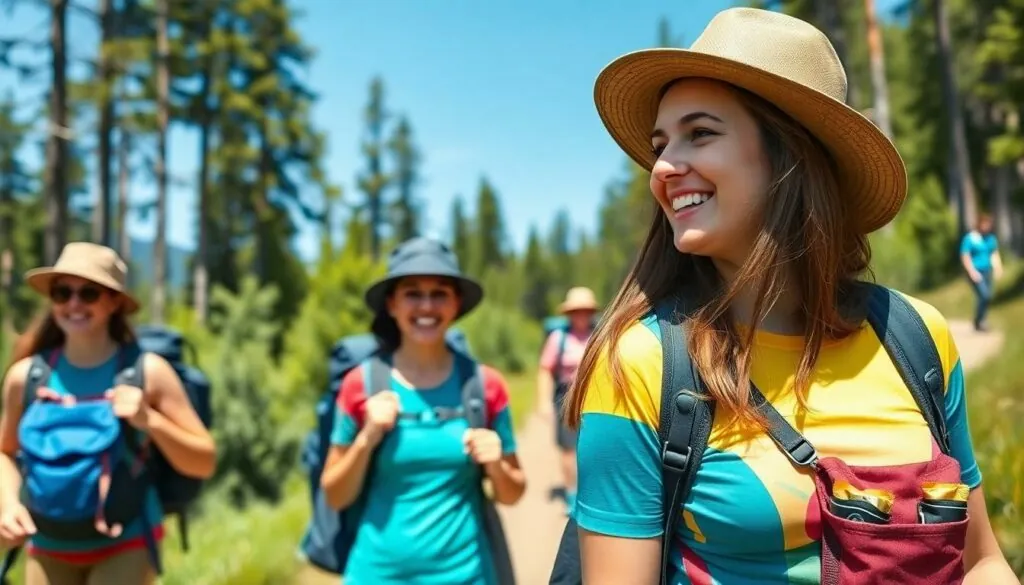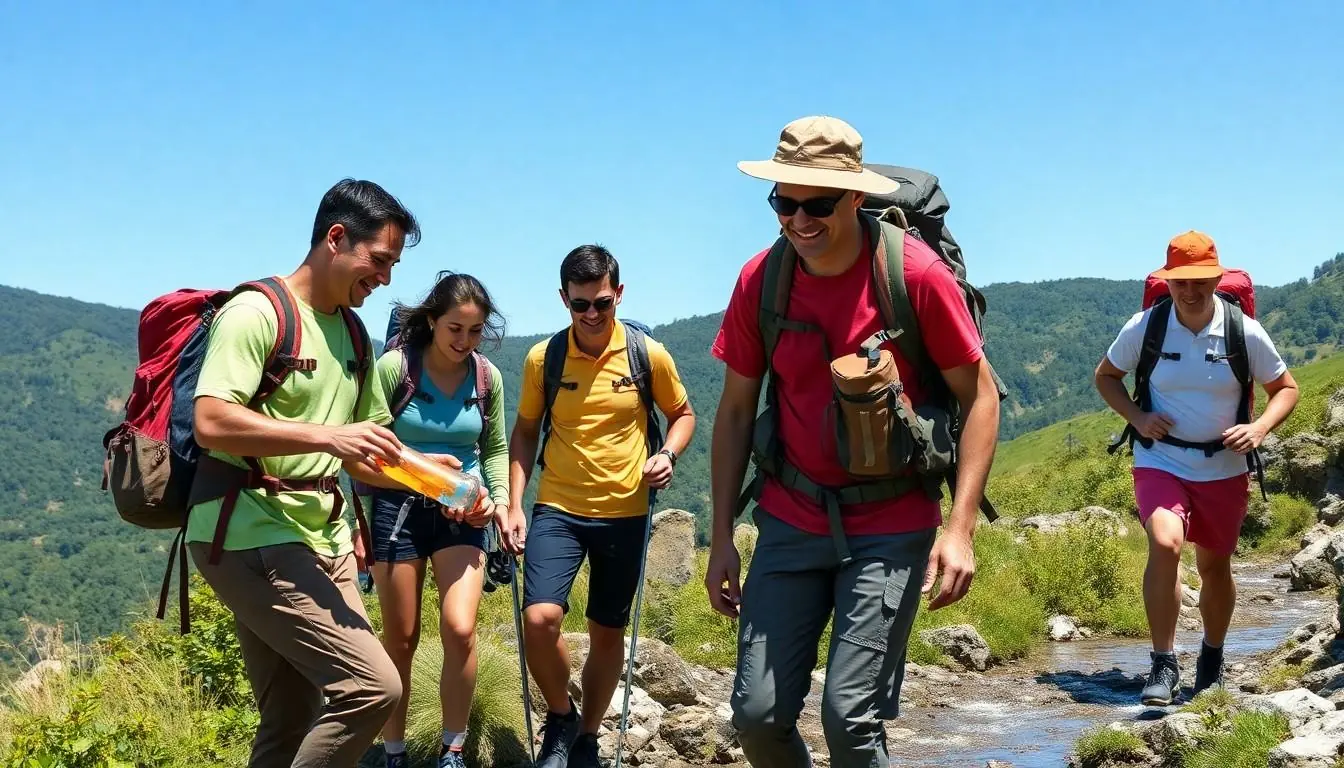Outdoor adventures can be thrilling, but they come with their own set of risks. Whether it’s hiking, camping, or just enjoying a sunny day at the park, knowing the right safety tips can mean the difference between a fun day out and a trip to the ER. But what if some of those tips are more like urban legends?
Table of Contents
ToggleUnderstanding Outdoor Safety Tips
Outdoor safety tips play a crucial role in minimizing risks during adventures like hiking and camping. Staying aware of the environment ensures one can better respond to potential hazards. It’s essential to prepare adequately before engaging in any outdoor activity. Carrying enough water, food, and emergency supplies is non-negotiable for maintaining health and safety.
Choosing the right gear also contributes significantly. Proper footwear prevents injuries and supports stability on uneven terrain. Additionally, wearing weather-appropriate clothing protects against sudden changes in conditions. Tracking weather forecasts before heading out helps avoid unexpected storms or extreme temperatures.
Staying informed about one’s surroundings matters. Familiarizing oneself with trail maps and landmarks helps in navigation. Keeping an eye out for wildlife ensures encounters remain safe and respectful. Using designated paths reduces the risk of getting lost or injuring oneself.
Always sharing plans with someone before departing enhances safety. Notifying friends or family of routes and expected return times increases accountability. Carrying a fully charged mobile phone or a GPS device assists in emergencies but should not replace traditional navigation methods.
Recognizing signs of fatigue and heat exhaustion aids in decision-making during hikes or outdoor activities. Taking regular breaks provides opportunities to hydrate and recharge. Having first aid supplies readily available helps address injuries that may occur.
By implementing these safety measures, outdoor enthusiasts can protect themselves and enjoy their adventures with confidence. Each step taken towards understanding and practicing outdoor safety tips heightens awareness, leading to more enjoyable experiences in nature.
Common Safety Tips for Outdoor Activities
Outdoor activities contain inherent risks, making safety tips essential for a safe experience. Here are some common recommendations to follow.
Tip 1: Stay Hydrated
Hydration plays a crucial role during outdoor activities. Carry at least two liters of water for every six hours of hiking or strenuous activity. Recognizing early signs of dehydration, like fatigue or dizziness, helps prevent serious health issues. Choosing electrolyte-rich drinks can also improve hydration, especially in hot weather. Regularly sipping water throughout the day maintains energy levels and performance.
Tip 2: Dress Appropriately
Wearing suitable clothing ensures comfort and protection in varying outdoor conditions. Select moisture-wicking fabrics that handle sweat effectively, keeping the body cool and dry. Layering clothing allows adjustments for changing temperatures, particularly in mountainous areas. Sturdy footwear reduces the risk of injuries and discomfort while navigating trails. Bringing a waterproof jacket safeguards against unexpected rain and other weather changes.
Tip 3: Know Your Limits
Understanding personal limits is essential to outdoor safety. Assess physical endurance and skill level before embarking on any activity, especially challenging hikes. Gradually increasing difficulty over time aids in building strength and resilience. Recognizing when to turn back, even if disappointed, enhances safety and well-being. Listening to the body helps prevent injuries and ensures enjoyable outdoor experiences.
Identifying Misconceptions
Clarifying misconceptions about outdoor safety enhances the enjoyment of activities while mitigating risks. Misunderstandings can lead to dangerous situations.
Common Myths About Outdoor Safety
Many individuals believe they’re safe simply by staying on marked trails. Deviating from established paths can lead to injuries or getting lost. A prevalent myth involves the perception that anyone can identify safe drinking water in nature. In reality, untreated water can harbor harmful microorganisms. Additionally, some think that physical preparation isn’t necessary for short outings; regarding this, even brief trips require adequate hydration and pace awareness.
Recognizing False Safety Tips
Identifying false safety tips is crucial for outdoor enthusiasts. One widespread misconception suggests that carrying extra gear guarantees safety, but overpacking may hinder movement or increase fatigue. Equally, some believe that cell phones always provide reliable navigation, yet network coverage remains unreliable in remote areas. Many think that generous sunscreen application means sunburn prevention, but reapplication every two hours is critical when outdoors. By scrutinizing these myths, she or he can significantly enhance outdoor safety awareness and preparedness.
Evaluating Safety Practices
Understanding which practices contribute to safety during outdoor activities is crucial. Assessing tips based on effectiveness helps filter out unreliable advice. Recognizing the significance of proper hydration underscores its role in preventing fatigue, suggesting carrying at least two liters of water for every six hours spent outdoors. Acknowledging that appropriate attire, like moisture-wicking fabric and layered clothing, adjusts to temperature changes enhances comfort and safety.
Carrying sturdy footwear minimizes injury risk significantly, allowing for easier navigation across various terrains. Developing an awareness of personal endurance and actively monitoring one’s limits plays an important role in decision-making during activities. Discussions around safety tips often introduce misconceptions. For instance, believing that being on a marked trail guarantees safety misrepresents potential hazards in the wilderness.
Clarifying that untreated water sources may pose health risks addresses another common myth. Evaluating the need for proper physical preparation, regardless of trip length, emphasizes readiness. Sharing plans with others amplifies safety by ensuring someone knows the expected route and timeline. Scrutinizing common but false safety tips proves beneficial; carrying extra gear doesn’t always enhance safety, and relying solely on cell phones for navigation in remote areas can lead to disappointment.
Through an informed approach, outdoor enthusiasts can distinguish safe practices from myths. Enjoyment of outdoor activities increases when individuals prioritize reliable safety tips and develop a deep understanding of their surroundings. Familiarity with signs of fatigue allows participants to act promptly, ensuring a more enjoyable and secure outdoor experience.
Conclusion
Understanding the difference between effective safety tips and common misconceptions is vital for anyone engaging in outdoor activities. By focusing on proven strategies like proper hydration and appropriate gear, outdoor enthusiasts can significantly enhance their safety. It’s crucial to avoid relying on myths that could lead to dangerous situations. Prioritizing preparation and awareness not only ensures a more enjoyable experience but also fosters a deeper appreciation for nature. Embracing sound safety practices allows individuals to explore the great outdoors with confidence and peace of mind.





